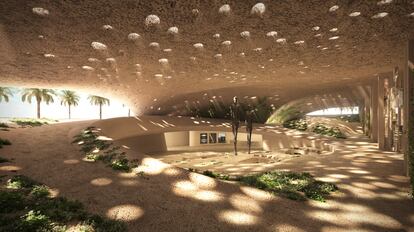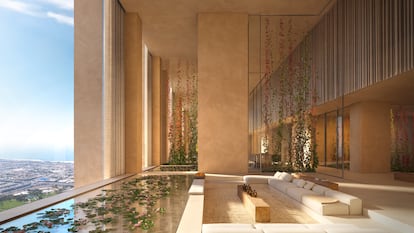After centuries of building lightweight, temporary architecture in the desert, some countries have been building curtain wall skyscrapers for decades. The result is seemingly cosmopolitan cities, but radically provincial ones. These are empty cities, with fewer inhabitants than tourists. In general, they are closer to business scenes than civic life. These translucent or transparent buildings are, in addition, permanently bathed in desert sand. What has happened?
In reality, cities like Dubai or Abu Dhabi have sought to repeat the journey that architecture has been making for centuries trying to emulate the exemplary. In the same way that the Renaissance style of the National Library of Madrid came from Italy, the modernity of the Persian Gulf came from Chicago and the Manhattan of the great skyscrapers. And he landed on the sand. He did not bother to question the unsustainable energy consumption of this type of property or the difficult relationship between glass and sand. That is to say: he forgot to update the tradition. It is precisely this trick, the updating of ancestral knowledge, that, finally, some architects have begun to play.
In Qatar, Jean Nouvel dressed his Doha Tower with a latticework and built the National Museum emulating the broken physiognomy of a desert rose. In Dubai, the architects of Olot RCR (the second Spaniards to obtain the Pritzker Prize, which they won in 2017), have also covered their Muraba Velo Tower with a porous stainless steel mesh that protects it from sunlight and prevents the accumulation of sand in their glasses. Inspired by the Mashrabiya, the veil covers outdoor spaces that, having a double orientation, allow cross ventilation. That, an idea that comes from the traditional patio, reduces the temperature naturally.
Located next to the canal, the main transport artery in Dubai, Sheikh Zayed Road, the El Velo tower hides an underground with swimming pools, a gym, a domed spa and a dune-shaped amphitheater.
RCR, Rafael Aranda, Carme Pigem and Ramón Vilalta, have been working with Ibrahim Al Ghurair for a decade. More than five years ago they completed the Muraba Dia apartment building on Palm Jumeirhah, the largest artificial island in the world.

Then they signed the Dar Al Marefa School for 2,500 students and, in turn, completed two single-family homes. One is that of his client Ibrahim Al Ghurair, the other that of his brother Hashim. Both are protected from the sun with a concrete architecture that recalls traditional desert tents. After this learning, it is now the turn of a skyscraper, the Muraba Veil, which has the advice of the WSP and Arup engineering teams.
With 131 apartments and 73 floors, the Muraba Veil tower will thus be the first high-rise building of these Spaniards to win the Pritzker Prize. Who was going to tell the architects of Olot that they would end up building their first skyscraper in the desert.

